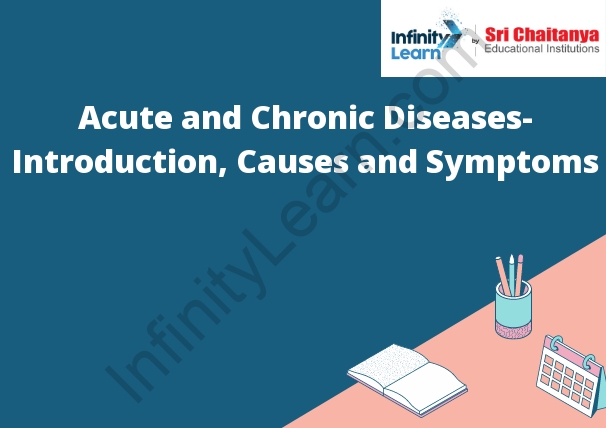Table of Contents
Introduction:
The introduction should set the scene and provide a brief overview of the essay topic. It should also introduce the main points that will be covered in the essay.

Disease
A disease is a condition that impairs normal bodily functions. Diseases can be caused by a variety of factors, including bacteria, viruses, genetics, and lifestyle choices. Some diseases, such as cancer, are not caused by a specific agent, but are the result of a combination of environmental and lifestyle factors.
Acute Disease:
An acute disease is a short-term illness that usually resolves itself within a few weeks. Acute diseases are often caused by a viral or bacterial infection and can be treated with antibiotics or other medications. Some common symptoms of an acute disease include fever, headache, muscle aches, and sore throat.
Causes and Symptoms of Acute Disease
The cause of an acute disease is typically a virus or bacteria. The symptoms of an acute disease include fever, chills, headache, muscle aches, and fatigue.
Example of Common Acute Disease
A common acute disease example would be the common cold. This is a viral infection that causes inflammation and congestion in the nose and throat. It is typically a self-limited illness that resolves within a few days to a week.
Chronic Disease:
A long-term, often progressive disease that cannot be cured and may cause death.
Chronic diseases are diseases that last for a long time, often years. They can be progressive, meaning they get worse over time, and they may cause death. Some examples of chronic diseases are heart disease, cancer, and diabetes.
Causes and Symptoms of Chronic Disease
There are many causes and symptoms of chronic diseases. Some common causes of chronic diseases include genetics, aging, and lifestyle choices. Smoking, poor diet, and lack of exercise are all common lifestyle choices that can lead to chronic diseases. Some common symptoms of chronic diseases include fatigue, pain, shortness of breath, and changes in weight.
Prevention against Chronic Disease
Prevention against chronic diseases is important because of the high cost to society and individuals. Chronic diseases are the leading cause of death and disability in the United States. They account for seven of the 10 leading causes of death. They are also responsible for two-thirds of all deaths. The direct and indirect costs of chronic diseases are estimated to be more than $1.6 trillion per year, or about $10,000 per person.
Chronic diseases are illnesses that last a long time and usually cannot be cured completely. They include heart disease, stroke, cancer, diabetes, arthritis, and Alzheimer’s disease. Many chronic diseases can be prevented by making healthy choices, such as eating healthy foods, getting regular exercise, and not smoking.
There are many ways to prevent chronic diseases. One is to eat a healthy diet. This means eating plenty of fruits, vegetables, and whole grains, and choosing lean protein sources. It also means avoiding foods high in unhealthy fats, salt, and sugar.
Getting regular exercise is another important way to prevent chronic diseases. Exercise helps keep your heart and lungs healthy, and it can help control weight and blood sugar levels.
Quitting smoking is one of the most important things you can do to prevent chronic diseases. Smoking increases your risk of heart disease, stroke, lung cancer, and other diseases.
Another important way to prevent chronic diseases is to get regular health screenings. Screenings can detect early signs of disease, when treatment is most likely to be successful.
Prevention is the best way to avoid chronic diseases. Making healthy choices is not always easy, but it is worth the effort. By making healthy choices, you can improve your health and reduce your risk of chronic disease.








